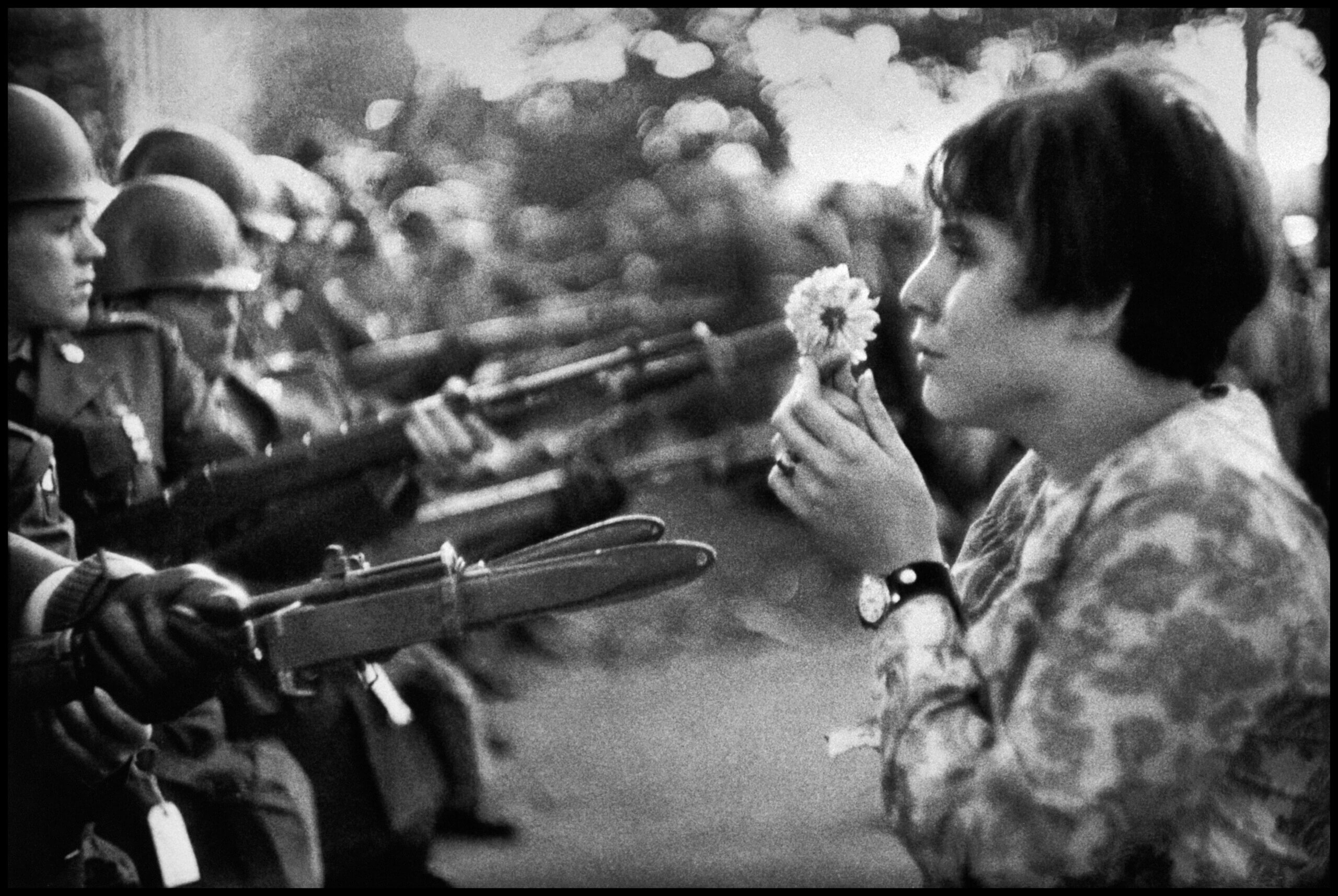Is today’s anti-woke movement just a continuation of the anti-hippie movement that began in the 1960s? At that time, the collision between Flower Power and Pentagon Power split America into two cultural camps that have been at odds with each other ever since.
The divisions in our nation were clearly delineated by Pat Buchanan, speechwriter for Richard Nixon and later a Presidential hopeful himself. Avidly anti-abortion, Buchanan’s Catholic fundamentalism and divisive politics-of-the-nasty rhetoric was a declaration of war against all that is modern, namely sexual tolerance, expanded consciousness, women’s equality, and environmentalism.
“Where liberals see an ever-more-splendid diversity of colors, creeds, ethnicities, ideologies, beliefs and lifestyles, the Right sees the disintegration of a country, a nation, a people, and its replacement with a Tower of Babel,” he said in the early 90s, perfectly framing today’s political landscape. Well before Donald Trump and Ron DeSantis, Buchanan helped fuel an anti-woke culture war rooted in sustaining white male power.
While the hippie movement was not America’s first foray into cultural and political emancipation, the enormity of the post-World War 2 baby boom meant it’s outsized influence was boosted by the sheer force of numbers. Earlier movements – to free the enslaved and give women the vote – opened the door to modern liberalism and its pulse of social and political liberation. These movements were followed by a backlash not unlike the surging opposition against current emancipation movements. The violently political Ku Klux Klan has its mirror in today’s Proud Boys and Oath Keepers; the 2023 racism of Alabama’s Senator Tommy Tuberville is just as blatant as that of South Carolina’s segregationist Senator Strom Thurmond’s in 1957.
Tim Leary, the Harvard professor turned “acid guru” of the 60s, famously advocated woke, although he never used the term. “Turn on, tune in, drop out,” the advice for which he is most infamous, was all about woke: awakening to the world as it is and refusing to participate in a suicidal system. Today we refer to the suicidal system in varied terms: systemically racist, homophobic, misogynistic, climate-killing, and economically inequitable. However we name it, it remains the same, a predatory system based on greed, aggression and ignorance. In blunt condemnation, in his book Straw Dogs philosopher John Gray encapsulates the suicidal violence our we inflict on each other and our planet by designating our species as “Homo rapiens.”
Banning books and controlling women’s bodies are straight out of the anti-woke playbook, tactics developed and perfected by authoritarians the world over. In this sense Trump and DeSantis are anything but original. Woke/anti-woke conflicts are not simply political wrestling between right and left, however; they have uncomfortable parallels in the processing and operations of our right and left-brain hemispheres.
According to psychiatrist Iain McGilchrist, author of The Master and His Emissary, our right hemisphere experiences reality’s wholeness as resonant interrelationships within a living system, while our left hemisphere fragments reality through the designation, manipulation, and utility of separate objects. Embedded in such functioning as people are, the woke/anti-woke dichotomy plays itself out in the workings of our cultural and political behavior. “Our talent for division, for seeing the parts, is of staggering importance – second only to our capacity to transcend it, in order to see the whole,” he writes.
In 1972, seeing the whole was the “blue marble” photo of Earth floating in the lonely blackness of space. That was, and still is, woke.






Be First to Comment